
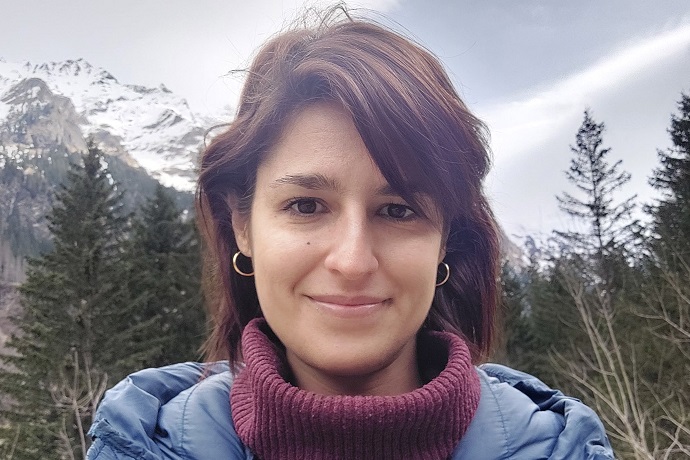
Estíbaliz Gascón specialises in the evaluation and diagnostics of weather forecasts. She is now putting her skills to good use by evaluating forecasts of extreme weather events and diagnosing km-scale forecasts ECMWF is developing as part of the EU’s Destination Earth initiative.
Esti liked science and nature before she started her environmental science degree course in Spain, but she was not sure in which direction to go. During her studies, her interest in meteorology was awakened.
She followed up her first degree with a master’s in meteorology. After that she initially worked for field campaigns at the University of León (Spain). From the second year, she combined her work on those campaigns with a PhD at the same establishment on analysing and forecasting convective precipitation.
“The topic stemmed from the field campaigns I was involved in: in winter, to evaluate the physical processes behind heavy snow, and in summer, to better understand the physical processes behind large hail and improve its prediction,” Esti says.
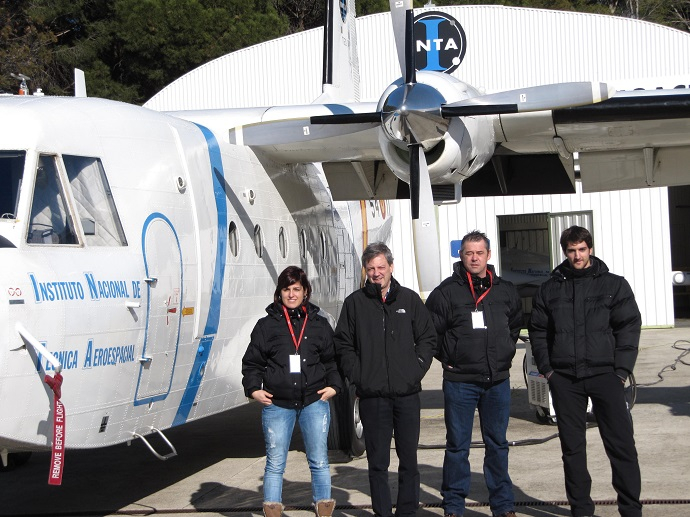
This photo shows Esti with three of her co-workers next to one of the planes used in the field campaigns she was involved in.
She also worked as a visiting scientist in Taiwan and Cyprus, as part of her PhD, and in Italy as part of her postdoc activities. “Since we had similar research interests, such as improving our understanding of convective processes in the atmosphere, I decided to visit research centres in Cyprus and in Taiwan as they used the same forecasting model as we did in Spain.”
The stay in Lecce, Italy, followed her PhD because one of her PhD examiners was from Italy and they were interested in similar investigations.
Diagnosing forecasts at ECMWF
Esti joined ECMWF in 2016 to help with the creation of new severe weather and post-processed probabilistic products and the diagnostics and evaluation of forecasts of ECMWF’s Integrated Forecasting System (IFS). This involves research on what it is in the forecasting model that makes some forecasts go wrong. It also includes investigating in what kind of weather conditions the forecast performs better or worse, and why.
Esti soon became a member of ECMWF’s forecast daily report group, which analyses recent forecast output for strengths and weaknesses and identifies issues in the IFS.
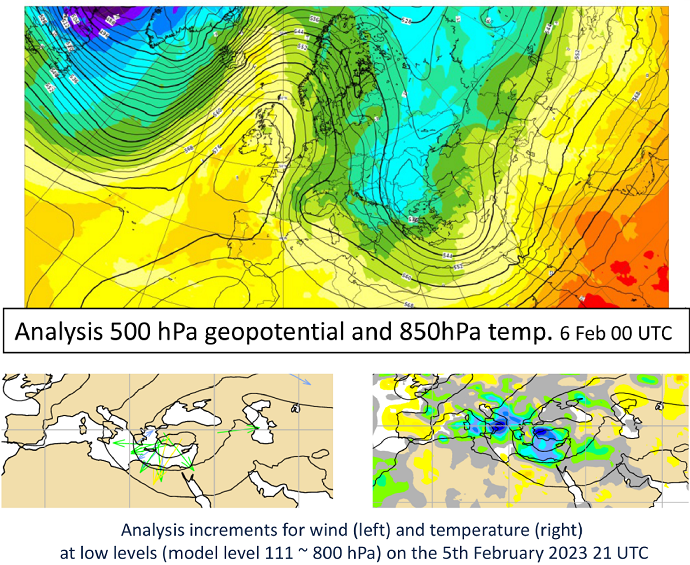
In these charts, Esti analysed how ECMWF’s forecasting system was doing in predicting a storm that affected Greece, Türkiye, Syria, Lebanon, Israel and other countries. Large analysis increments (differences between a short-term forecast and the initial conditions of forecasts) were identified at different pressure levels, due to the difficulty of predicting this storm by the IFS on 5 February 2023.
As part of her work at ECMWF, Esti has been involved in a range of projects to improve the prediction of extreme weather events. “For example, in the EU-funded ANYWHERE project, I was involved in creating new probabilistic products for high-impact weather related to precipitation type,” she says.
Most of the projects have been related to ensemble forecasting: the provision of a range of slightly different forecasts to represent the range of future weather possibilities. “A key question in the projects was how to create useful products for our users from ensemble forecasts.”
Involvement in Destination Earth
Since May 2022, Esti has also worked for the EU’s Destination Earth (DestinE) initiative. DestinE aims to create interactive computer simulations at km-scale, called digital twins, of Earth.
ECMWF’s role is to provide the digital twin engine and the first two digital twins. A Digital Twin on Weather-Induced and Geophysical Extremes will provide capabilities for the assessment and prediction of environmental extremes. This involves a global continuous component and an on-demand regional component.
In addition, a Digital Twin on Climate Change Adaptation will support the analysis and testing of scenarios.
“Together with colleagues, I evaluate the performance of extreme weather events in DestinE’s high-resolution forecast, which will have a grid-spacing of just a few kilometres,” Esti says. “I also investigate the remaining deficiencies of the model in detecting extreme events, which is the diagnostic part of my work. This involves a lot of discussions with other scientists from the Forecast and Research Departments and engagement with other aspects of the DestinE forecasts.”
She has found that a high-resolution version (4.4 km resolution) of the IFS offers already a lot of potential, even without any changes to the model physics.
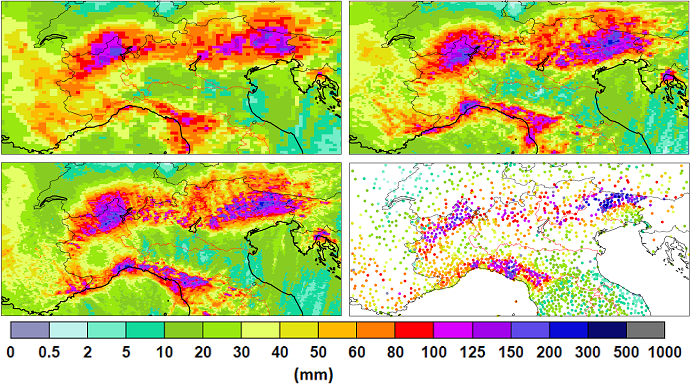
This image shows 78-hour forecasts of 24-hour precipitation on 30 October 2018, using the IFS at a grid spacing of 9 km (top left), 4 km (top right), and 2.8 km (bottom left). The bottom right-hand panel shows the available observations. They indicate that the higher-resolution versions of the IFS produce more accurate extreme precipitation values. A more complete evaluation is provided by the image below.
“In particular, tropical cyclones and intense cyclones in the Mediterranean, called medicanes, are predicted better at 4.4 km than with ECMWF’s current 9 km model,” Esti says. “We have also shown that we can improve on ECMWF’s predictions of extreme weather over mountains, such as extreme precipitation or strong wind gusts.”
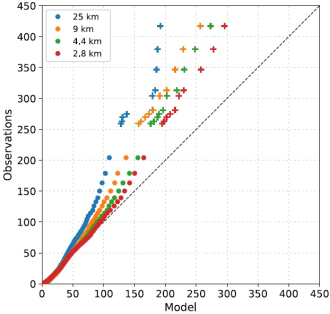
This chart illustrates an evaluation of 24-hour accumulated precipitation in mm for four aggregated extreme precipitation cases in the IFS between day 2 and 3 of the forecast in northern Italy (Storm Adrian in October 2018, Storm Alex in October 2020, and two storms that affected the Po Valley in November 2019) at different horizontal resolutions. The higher the forecast resolution, the closer the forecasts are to the observations. Dots correspond to quantiles 1–99 and crosses to quantiles > 99.
A more senior position
At the start of this year, Esti moved to a more senior position, where she also deals with external contractors of DestinE.
“I act as a technical officer for the contractors of the On-Demand Extremes component of the first digital twin, where I am responsible for the scientific part,” she says. “In addition to my forecasting system investigations, I now also have some management tasks.”
“That doesn’t mean I have given up on my diagnostics activities or my work for the daily report group, which runs in parallel and which I still greatly enjoy.”
